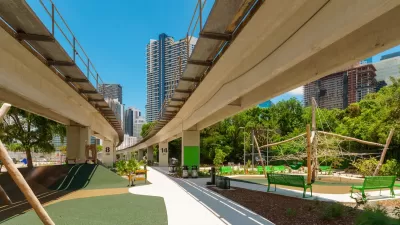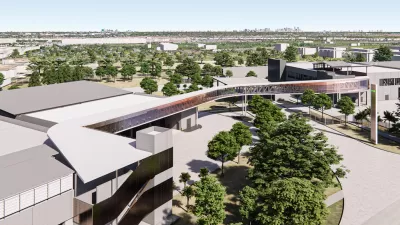As Miami considers using taxes to fund yet another stadium project, analysis indicates the hundreds of millions in public subsidies used for the construction of the city's new baseball stadium will end up costing taxpayers more than $2 billion.
In order to fund a new $639 million ballpark and parking complex for the Miami Marlins, team owner Jeffrey Loria was able to pursuade Miami-Dade County to kick in 70 percent of the cost. Sounds like a sweet deal, right? For Loria, absolutely, but for taxpayers its looking increasingly bad, reports Douglas Hanks.
Because, as Barry Petchesky at Deadspin points out, construction on the stadium needed to start and be paid for immediately, the county was forced to sell bonds on Wall Street at terrible terms. How terrible you ask? As Mayor Carlos Gimenez mentioned recently, just one set of stadium bonds worth about $90 million will cost close to $1.2 billion to pay back by 2048.
"The high interest comes from the penalty Miami-Dade must pay in exchange for a repayment plan that lets the county delay by 15 years making it [sic] first debt-service payment to the Wall Street lenders who bought the bonds," says Hanks. "Because Miami-Dade couldn’t afford a straight-line paydown of the loan — like a home mortgage — the finance team had to be more creative in borrowing the money on Wall Street. Unlike most bonds, these can’t be repaid back early either."
"Remember," adds Petchesky, "this $1.2 billion is only on one set of bonds. The total payments for all of the $500 million borrowed by the county will eventually come in at a whopping $2.4 billion. Not only did Jeffrey Loria get taxpayers to buy him a stadium, but they bought him the most expensive stadium ever built."
FULL STORY: How a $91 million loan on the Marlins ballpark will cost Miami-Dade $1.2 billion

Maui's Vacation Rental Debate Turns Ugly
Verbal attacks, misinformation campaigns and fistfights plague a high-stakes debate to convert thousands of vacation rentals into long-term housing.

Planetizen Federal Action Tracker
A weekly monitor of how Trump’s orders and actions are impacting planners and planning in America.

In Urban Planning, AI Prompting Could be the New Design Thinking
Creativity has long been key to great urban design. What if we see AI as our new creative partner?

King County Supportive Housing Program Offers Hope for Unhoused Residents
The county is taking a ‘Housing First’ approach that prioritizes getting people into housing, then offering wraparound supportive services.

Researchers Use AI to Get Clearer Picture of US Housing
Analysts are using artificial intelligence to supercharge their research by allowing them to comb through data faster. Though these AI tools can be error prone, they save time and housing researchers are optimistic about the future.

Making Shared Micromobility More Inclusive
Cities and shared mobility system operators can do more to include people with disabilities in planning and operations, per a new report.
Urban Design for Planners 1: Software Tools
This six-course series explores essential urban design concepts using open source software and equips planners with the tools they need to participate fully in the urban design process.
Planning for Universal Design
Learn the tools for implementing Universal Design in planning regulations.
planning NEXT
Appalachian Highlands Housing Partners
Mpact (founded as Rail~Volution)
City of Camden Redevelopment Agency
City of Astoria
City of Portland
City of Laramie





























